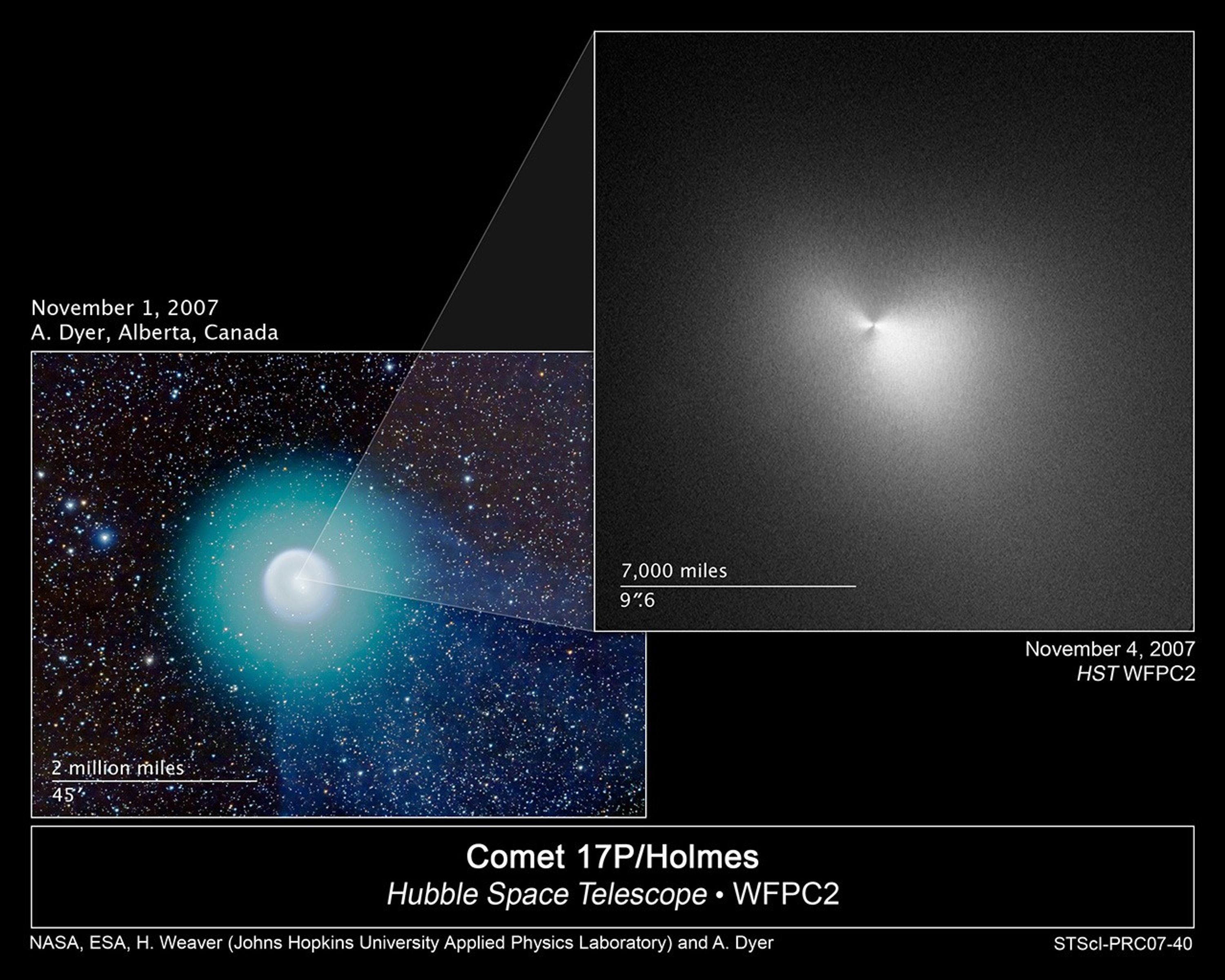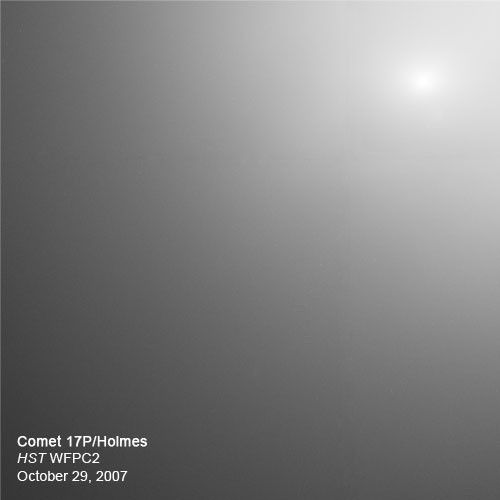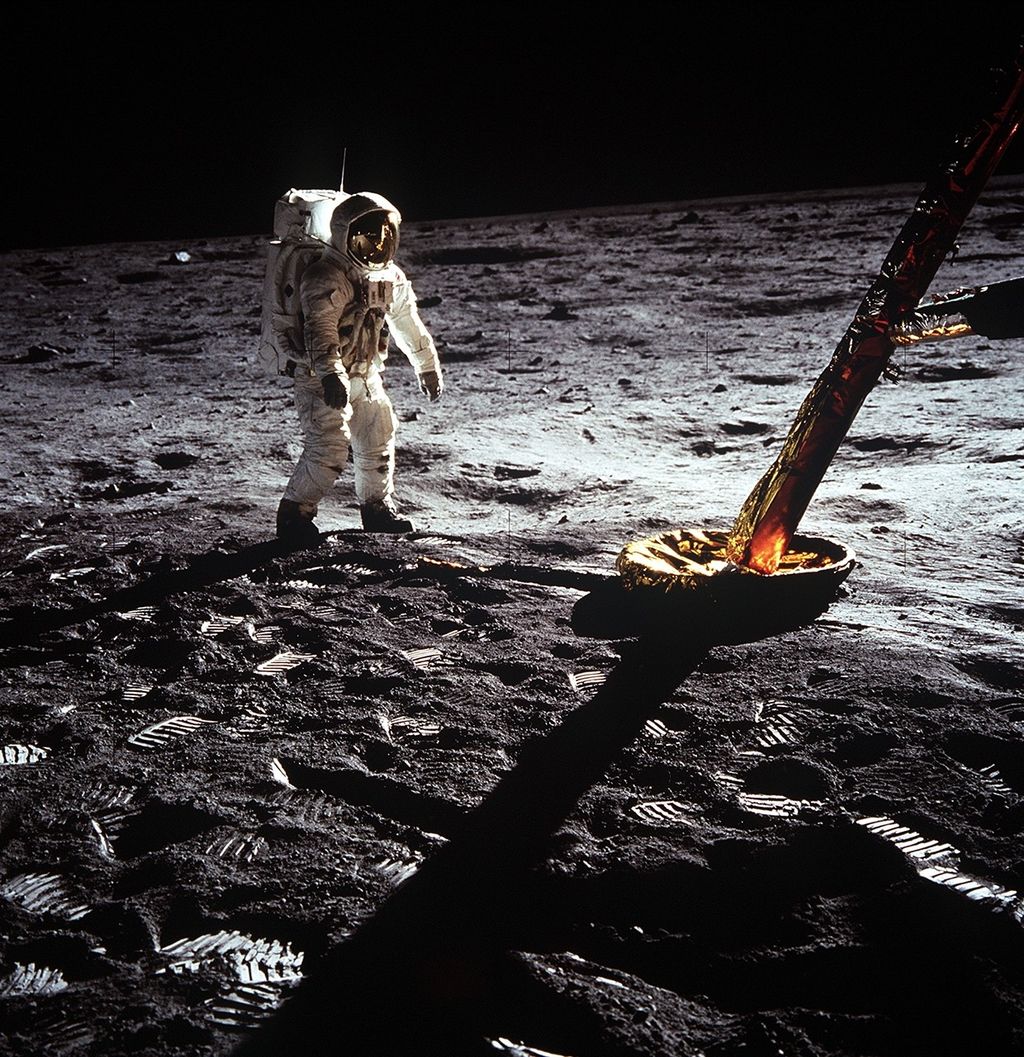1 min read
Comet 17P/Holmes Hubble Image – November 4, 2007

About the Object
- R.A. PositionR.A. PositionRight ascension – analogous to longitude – is one component of an object's position.03h 42m
- Dec. PositionDec. PositionDeclination – analogous to latitude – is one component of an object's position.+50° 37'
- ConstellationConstellationOne of 88 recognized regions of the celestial sphere in which the object appears.Perseus
- DistanceDistanceThe physical distance from Earth to the astronomical object. Distances within our solar system are usually measured in Astronomical Units (AU). Distances between stars are usually measured in light-years. Interstellar distances can also be measured in parsecs.On November 4, 2007, Comet 17P/Holmes was 1.62 Astronomical Units from the Earth, and 2.48 Astronomical Units from the Sun.
- DimensionsDimensionsThe physical size of the object or the apparent angle it subtends on the sky.Comet 17P/Holmes has the following orbital values: Aphelion distance: 5.2 Astronomical Units; Perihelion distance: 2.1 Astronomical Units; Semi-major axis: 3.6 Astronomical Units
About the Data
- Data DescriptionData DescriptionProposal: A description of the observations, their scientific justification, and the links to the data available in the science archive.
Science Team: The astronomers who planned the observations and analyzed the data. "PI" refers to the Principal Investigator.The Hubble image was created from HST data from proposal 11418: H. Weaver (Johns Hopkins University/Applied Physics Laboratory), C. Lisse (University of Maryland), P. Lamy (Space Astronomy Laboratory, Marseille), I. Toth (Hungarian Academy of Sciences), W. Reach and J. Vaubaillon (California Institute of Technology), and M. Mutchler (STScI). - InstrumentInstrumentThe science instrument used to produce the data.HST>WFPC2
- Exposure DatesExposure DatesThe date(s) that the telescope made its observations and the total exposure time.November 4, 2007
- FiltersFiltersThe camera filters that were used in the science observations.F555W (V) and F675W (R)
- Object NameObject NameA name or catalog number that astronomers use to identify an astronomical object.Comet 17P/Holmes
- Object DescriptionObject DescriptionThe type of astronomical object.Periodic Comet in our Solar System
- Release DateNovember 15, 2007
- Science ReleaseHubble Zooms In on Heart of Mystery Comet
- Credit

Related Images & Videos

Hubble Zooms In on Heart of Mystery Comet
NASA's Hubble Space Telescope has probed the bright core of Comet 17P/Holmes, which, to the delight of sky watchers, mysteriously brightened by nearly a millionfold in a 24-hour period beginning Oct. 23, 2007. Astronomers used Hubble's powerful resolution to study Comet Holmes'...

Ground-based Image of Comet Holmes - November 1, 2007
The ground-based image of Comet 17P/Holmes was taken November 1, 2007, by astrophotographer Alan Dyer. The observations were made in southern Alberta, Canada with a 105mm apochromatic refractor at f/5 with a Canon 20Da camera at ISO400. Field is about 2.5 x 1.5 degrees.

Comet 17P/Holmes Hubble Image Series
These images taken by NASA's Hubble Space Telescope reveal Comet Holmes's bright core. The images show that the coma, the cloud of dust and gas encircling the comet, is getting fainter over time. The coma was brightest in the Oct. 29 image. It is two times fainter on Oct. 31 and...

Animation of Comet 17P/Holmes Dimming Over Time
This animation is a composite of images taken by NASA's Hubble Space Telescope that reveal Comet Holmes's bright core. The images show that the coma, the cloud of dust and gas encircling the comet, is getting fainter over time. The coma was brightest in the Oct. 29 image. It is...
Share
Details
Claire Andreoli
NASA’s Goddard Space Flight Center
Greenbelt, Maryland
claire.andreoli@nasa.gov

































